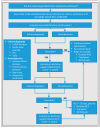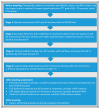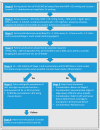Update on Weaning from Veno-Arterial Extracorporeal Membrane Oxygenation
- PMID: 32252267
- PMCID: PMC7230450
- DOI: 10.3390/jcm9040992
Update on Weaning from Veno-Arterial Extracorporeal Membrane Oxygenation
Abstract
Venoarterial extracorporeal membrane oxygenation (VA-ECMO) provides temporary cardiac and respiratory support and has emerged as an established salvage intervention for patients with hemodynamic compromise or shock. It is thereby used as a bridge to recovery, bridge to permanent ventricular assist devices, bridge to transplantation, or bridge to decision. However, weaning from VA-ECMO differs between centers, and information about standardized weaning protocols are rare. Given the high mortality of patients undergoing VA-ECMO treatment, it is all the more important to answer the many questions still remaining unresolved in this field Standardized algorithms are recommended to optimize the weaning process and determine whether the VA-ECMO can be safely removed. Successful weaning as a multifactorial process requires sufficient recovery of myocardial and end-organ function. The patient should be considered hemodynamically stable, although left ventricular function often remains impaired during and after weaning. Echocardiographic and invasive hemodynamic monitoring seem to be indispensable when evaluating biventricular recovery and in determining whether the VA-ECMO can be weaned successfully or not, whereas cardiac biomarkers may not be useful in stratifying those who will recover. This review summarizes the strategies of weaning of VA-ECMO and discusses predictors of successful and poor weaning outcome.
Keywords: predictors of successful weaning; venoarterial extracorporeal membrane oxygenation; weaning; weaning strategy; weaning timing.
Conflict of interest statement
Martin Orban received speaker honoraria from SedanaMedical, AstraZeneca, Bayer vital and congress organization support from AstraZeneca, outside the submitted work.
Figures







References
-
- Rajan S., Wissenberg M., Folke F., Hansen S.M., Gerds T.A., Kragholm K., Hansen C.M., Karlsson L., Lippert F.K., Kber L. Association of bystander cardiopulmonary resuscitation and survival according to ambulance response times after out-of-hospital cardiac arrest. Circulation. 2016;134:2095–2104. doi: 10.1161/CIRCULATIONAHA.116.024400. - DOI - PubMed
Publication types
LinkOut - more resources
Full Text Sources

